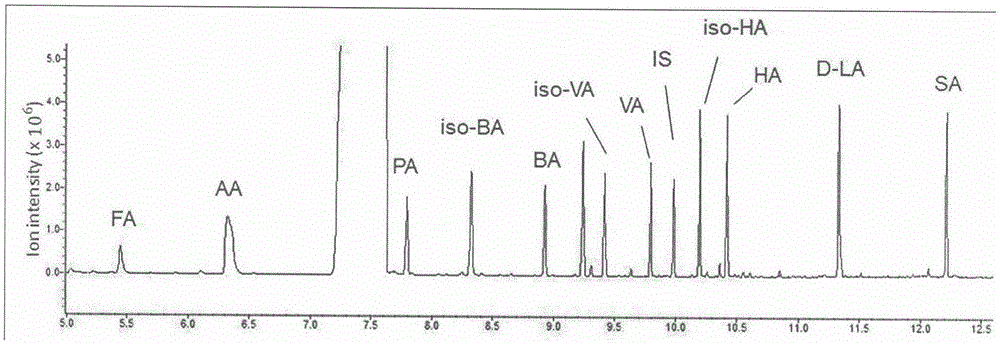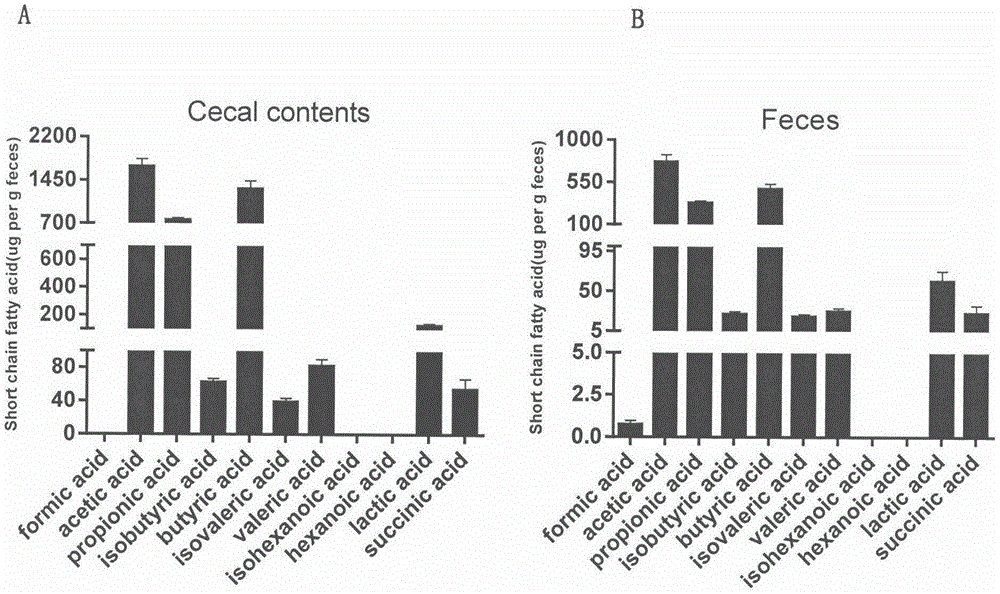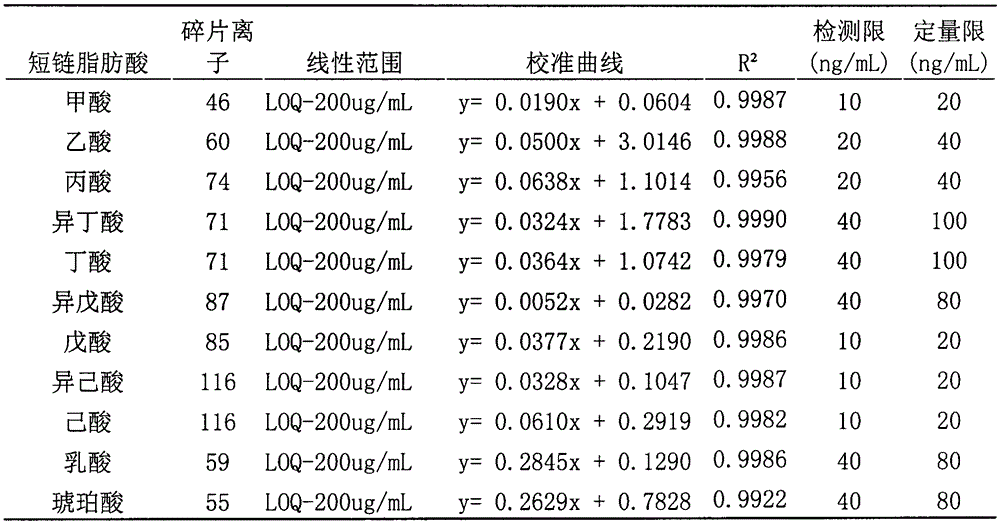GC-MS (gas chromatography-mass spectrometer)-based method for quantifying eleven types of short-chain fatty acids in intestinal contents and fecal samples
A short-chain fatty acid, GC-MS technology, which can be used in measurement devices, instruments, scientific instruments, etc., can solve the problem of inaccurate quantitative short-chain fatty acid results.
- Summary
- Abstract
- Description
- Claims
- Application Information
AI Technical Summary
Problems solved by technology
Method used
Image
Examples
Embodiment 1
[0017] Example 1: Determination of the content of short-chain fatty acids in the mouse cecum content sample
[0018] (1) Sample pretreatment: collect mouse cecum contents, freeze-dry them into powder, weigh 150mg freeze-dried powder, add 150uL 1M hydrochloric acid saturated sodium chloride solution first, then add 1.5mL ethyl acetate (containing IS5ug / mL) , put the sample on a homogenizer, grind and mix well, take 220uL supernatant after centrifugation at 10000rpm for 10min, dry it with 100mg magnesium sulfate, centrifuge at 18000rpm for 10min, then take 150uL supernatant and dry it with 50mg magnesium sulfate, centrifuge at 18000rpm for 10min , take 72uL of the supernatant and put it in a sealed gas-phase vial, add 18uL of derivatization reagent MTBSTFA, tighten the bottle cap, mix well and place it in a water bath at 80°C for 20min, then place the sample at room temperature for 8h to be derivatized for analysis;
[0019] (2) GC-MS analysis:
[0020] Get the sample obtained ...
Embodiment 2
[0036] Embodiment 2: Measuring the content of short-chain fatty acids in mouse feces samples
[0037] (1) Sample pretreatment: collect mouse feces samples, lyophilize into powder, and all the other processing steps and GC-MS analysis steps are the same as in Example 1. The content of short-chain fatty acids in the measured blank mice is as follows: figure 2 -B.
[0038] Due to the low content of isocaproic acid and caproic acid in the intestinal tract, no isocaproic acid and caproic acid were detected in the intestinal contents and feces samples of mice by this method. However, the established method for the determination of 11 short-chain fatty acids in intestinal contents and stool samples can be extended to other tissues or liquids with high content of isocaproic acid and caproic acid, such as caproic acid bacteria fermentation broth, and the method should be verified , so the establishment of this method is still meaningful.
PUM
 Login to View More
Login to View More Abstract
Description
Claims
Application Information
 Login to View More
Login to View More - R&D
- Intellectual Property
- Life Sciences
- Materials
- Tech Scout
- Unparalleled Data Quality
- Higher Quality Content
- 60% Fewer Hallucinations
Browse by: Latest US Patents, China's latest patents, Technical Efficacy Thesaurus, Application Domain, Technology Topic, Popular Technical Reports.
© 2025 PatSnap. All rights reserved.Legal|Privacy policy|Modern Slavery Act Transparency Statement|Sitemap|About US| Contact US: help@patsnap.com



